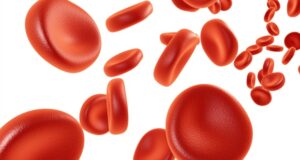
Increasing the levels of chemicals naturally produced in the body called endocannabinoids may thwart the highly addictive nature of opioids such as morphine and oxycodone while maintaining the drugs’ ability to relieve pain, according to Weill Cornell Medicine investigators working with researchers from The Center for Youth Mental Health at NewYork-Presbyterian. Endocannabinoids bind to cannabinoid receptors throughout the body that regulate activities, such as learning and memory, emotions, sleep, immune response and appetite.
Opioids prescribed to control pain can become addictive because they not only dull pain, but also produce a sense of euphoria. The preclinical study, published Nov. 29 in Science Advances, may lead to a new type of therapeutic that could be taken with an opioid regimen to only reduce the reward aspect of opioids.
In 2023, opioid abuse or overuse was responsible for more than 80,000 deaths, fueling a national crisis, according to the U.S. Centers for Disease Control and Prevention. Illegally obtained drugs were ultimately responsible for many deaths, but not all of them.
When someone has surgery and is taking opioids for pain management, there’s always a risk of developing a dependence on these drugs.”
Dr. Francis Lee, senior author, chair of the Department of Psychiatry at Weill Cornell Medicine and psychiatrist-in-chief at New York-Presbyterian/Weill Cornell Medical Center
The co-senior author is Dr. Anjali Rajadhyaksha, adjunct professor of neuroscience research in pediatrics at Weill Cornell Medicine and director of the Center for Substance Abuse Research at Lewis Katz School of Medicine at Temple University. The first author, Dr. Arlene Martinez-Rivera, was an instructor in Dr. Rajadhyaksha’s lab at the time of the study and is now an assistant professor at the Katz School of Medicine.
A different perspective
None of the researchers were studying opioids when they started this project. Dr. Lee was investigating the role of endocannabinoids in fear and anxiety. Next door, Dr. Rajadhyaksha was studying mouse models of cocaine addiction. They decided to work together when reports in the literature suggested that the opioid system could potentially interact with the endocannabinoid system’s complex network of chemicals and receptors.
Just as opioids stimulate the brain’s reward system to release dopamine, so do the naturally occurring endocannabinoids and related drugs, such as tetrahydrocannabinol (THC), the substance in marijuana that produces a “high.” Although they have similar effects, endocannabinoids and THC both act through cannabinoid receptors and opioids interact with different receptors.
Surprisingly, the findings also upend the central dogma in the opioid field that combining endocannabinoids and opioids should exacerbate addictive behaviors in a synergistic way. “By both of us not being members of the opioid field, we came up with the counterintuitive idea that one system might actually block the other system from having effects on reward,” said Dr. Lee, who is also a professor of neuroscience at the Feil Family Brain and Mind Research Institute at Weill Cornell Medicine.
Surprising interaction of reward systems
Running with that idea, Dr. Martinez-Rivera tested elevating the two main endocannabinoids— first, anandamide (AEA) and then 2-AG—in mice. “We got lots of negative results initially while studying AEA, and we were actually going to give up on the project,” she said. “But then we switched to 2-AG and got positive findings.” Increasing the levels of 2-AG counteracts the rewarding properties of opioids, dampening behaviors associated with opioid addiction, yet still controlling pain in a mouse model.
The researchers used a chemical called JZL184 that prevents 2-AG from breaking down thereby increasing the level of this endocannabinoid in the brain. In separate assays, the team found less addiction-associated behavior when mice were treated with a low dose of JZL184 before being given morphine or oxycodone.
In pain assays, mice treated with JZL184 still appeared to experience the pain-relieving effects of morphine and oxycodone. “This suggests that endocannabinoids and opioids may not act together in areas of the brain and spinal cord involved in analgesia,” Dr. Rajadhyaksha said. “In contrast, their interaction in brain regions is involved in decreasing reward and dependence.”
Additional experiments showed that 2-AG exerts its effect through the CB1 cannabinoid receptor in the ventral tegmental area, a group of neurons in the midbrain that plays a key role in reward and motivation. Elevating 2-AG levels also reduced dopamine signaling, a key element of the reward system.
“This is one of the first examples showing that engaging the endocannabinoid system can have an antagonistic effect on another reward system—in this case, the opioid system,” Dr. Rajadhyaksha said.
Potential drugs like JZL184 are currently being tested in clinical trials as possible treatments for anxiety disorders, so Dr. Lee is optimistic about the timeline for testing them in combination with opioids for pain management in humans. “We’re thinking about this methodically and working toward translating these preclinical findings to help patients,” Dr. Lee said.
Source:
Journal reference:
Martínez-Rivera, A., et al. (2024). Elevating levels of the endocannabinoid 2-arachidonoylglycerol blunts opioid reward but not analgesia. Science Advances. doi.org/10.1126/sciadv.adq4779.




